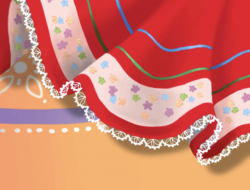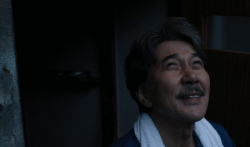Maybe we haven’t yet found a way to make music work as narrative, as discussed by my High Fidelity counterpart in this space last week, but narrative and music have already found a way to collaborate on film scoring.
Imagine being able to stand on the bow of a ship, with your arms stretched out in acceptance of the gusting wind, and not have the urge to sing “My Heart Will Go On.” Thirteen years ago, that would have been possible.
But beyond the mere linking of sounds and images forever in our minds, film scores have the ability to alter moods and embellish circumstances. Requiem for a Dream undoubtedly packs an emotional punch of its own, but throw in musical direction by Clint Mansell and the Kronos Quartet, and you have the most exhilarating, heart-wrenching hour-and-a-half of your life. The Fountain, another of Aronofsky’s films, has a soundtrack that brings forth the power of the Kronos Quartet, but for an added flair brings Scottish post-rockers Mogwai into the mix.
This is the most interesting thing about soundtracks in recent years—the way that popular musicians have delved into the art of film scoring. Jonny Greenwood, guitarist for Radiohead, orchestrated a Grammy-nominated score to the Academy Award-winning film There Will Be Blood, which meshes pianos, percussion, and Greenwood’s oddly beautiful string arrangements.
It isn’t surprising that we’re seeing artists take more of an interest in film as an artistic medium. Karen O of the Yeah Yeah Yeahs has collaborated with her bandmates and other musicians, ranging from Deerhunter’s Bradford Cox to the Queens of the Stone Age’s Dean Fertita, in an effort to compile the perfect soundtrack to Spike Jonze’s live-action adaptation of Where the Wild Things Are. Some may think this a mere attempt at rekindling an old flame between ex-lovers Jonze and Karen O, but it doesn’t make the output any less interesting.
Gentle hums, soft acoustics, handclaps, and at times raggedy guitar tones mix to create the fourteen-song soundtrack by Karen O and the Kids (her name for the aforementioned carousel of indie rock stars). Alone, the soundtrack sounds like a random collaboration of sounds, beats, and narrative sequences, but pairing the film with the sounds yields different results. This soundtrack sounds vibrant and youthful, bringing the children’s text to life and demonstrating the potential contributions from rock musicians.
Does anyone know what has the power to bring together artists like Thom Yorke, Death Cab For Cutie, Muse, Grizzly Bear, and eleven other all-stars to submit original, and unreleased material for compilation? Why, the new Twilight soundtrack of course! Without knowing anything about the project, it seems unlikely that these big names would go out of their way to contact director Chris Weitz to get their music heard by countless teenage girls; but if some blood-thirsty high school sophomore starts listening to Radiohead indirectly, due to the influence of Stephanie Meyer, I’m not going to complain. It only takes one listen to Thom Yorke’s “Hearing Damage” to surmise that this isn’t just some compilation of b-sides either (ahem, Dark Was The Night).
With more opportunities for popular musicians to demonstrate their creativity in a new area—beyond the boring old compact disc—it seems as if we’ve already reached a long sought after merger between narrative and music. We’ve come to a new era where Howard Shore’s scores are not the only thing sought after by filmmakers anymore—a differently educated musical mind can help to bring far more interesting concepts to the table. Even Danny Elfman had Oingo Boingo.
Listen to Oingo Boingo with James at jmcgrory@georgetownvoice.com.




